The Happy Tray
“The students I serve, along with millions of others across the country, must pack the weight of food insecurity in their backpacks daily to school.”
Help nourish students’ minds, bodies, and hearts this holiday season!
“The students I serve, along with millions of others across the country, must pack the weight of food insecurity in their backpacks daily to school.”
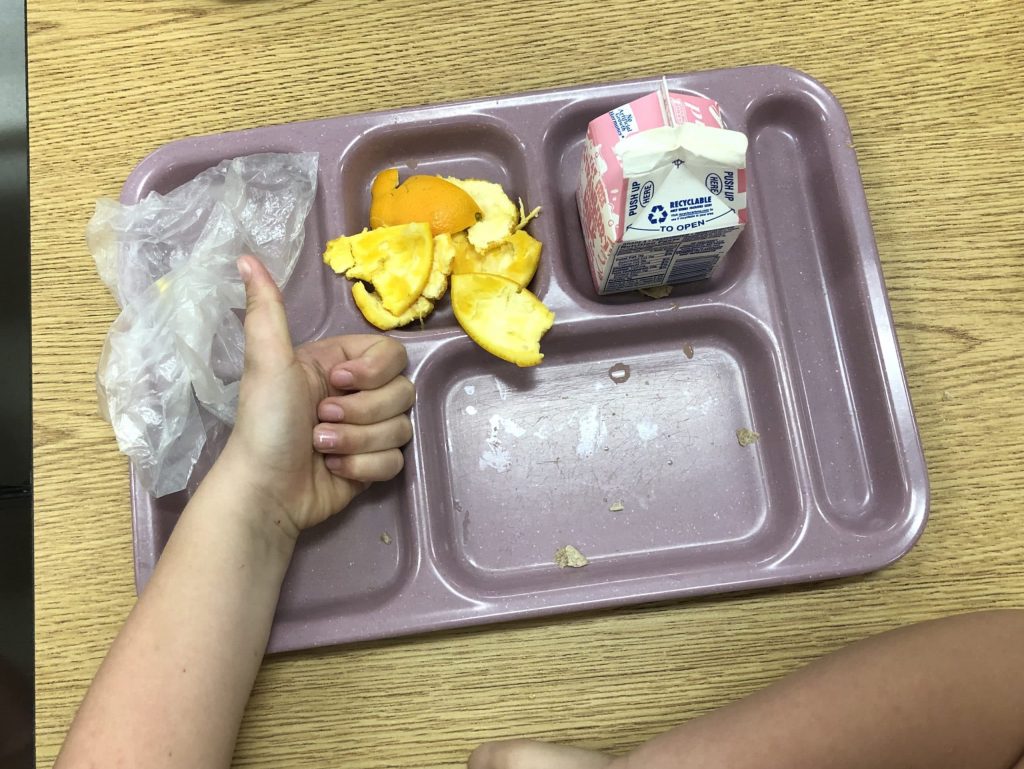
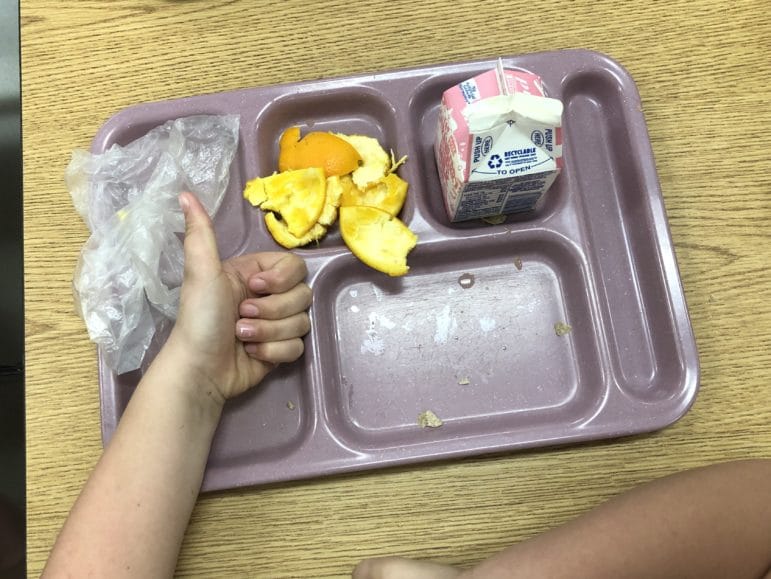
By Shannon Newerth, FoodCorps AmeriCorps Service Member: Van Buren, Arkansas
“Miss Shannon! Miss Shannon!” I hear as I walk around the cafeteria during lunch. Students are calling for me from their seats, anxiously waiting to show me what they brought in their lunch boxes or picked up off the line.
Carrots. Applesauce. Yogurt. Grapes. I look at them with beaming eyes and say, “I am so proud of you for making these choices today — now let’s see you eat it!”
For some students, it may be challenging to finish all the food they have brought or placed on their trays. For others, it is not so difficult.
I see raised hands. I walk over to a student to help open her string cheese. I see another hand. This student needs a napkin. I hand him one of the few I keep in my back pocket during lunch. As our remaining minutes in the cafeteria dwindle, I congratulate students on making a “happy tray,” a tray with food completely finished paired with an empty milk carton.
These students look up at me with big eyes and wide grins. These faces are the faces of food insecurity. For many — if not all — of the students with a “happy tray” lunch in the cafeteria, this may be the most balanced meal they receive that day. In some cases, it may be the only meal they receive that day.
I can be found in the cafeteria at two elementary schools in Van Buren, Arkansas. One of the schools I serve at is located in an urban area just a few blocks away from downtown Van Buren. The other school is rural and is located on the outskirts of the city. These two schools serve culturally different student populations with one major commonality: 73% to 88% of the students are free and reduced lunch recipients. Many of those students are among the most vulnerable of the 560,000 Arkansas residents who struggle with food insecurity.
Food insecurity can be defined as the lack of access to healthy or nutritious foods. At the surface, food insecurity is seen as a result of unemployment, low wages, and poverty; beneath, many of these factors are deeply rooted in racial and socioeconomic discrimination. It is a tragedy that the students I serve, along with millions of others across the country, must pack the weight of this social injustice in their backpacks daily to school.
As a FoodCorps service member, I am given the unique opportunity to meet students in the classroom to unpack and address food insecurity and hunger in a way that empowers them to make positive food choices with the food they have access to. One of my favorite lessons created by FoodCorps is “Get to the Source.” In this lesson, students play a game to identify foods and match them to their sources. They then learn the definition of minimally versus highly processed foods and, in groups, apply that understanding to sort various food products that share an original, whole food source. Learning these skills is particularly important to students with limited access to whole foods. “Get to the Source” equips students with the ability to choose minimally processed foods in order to make more positive choices.
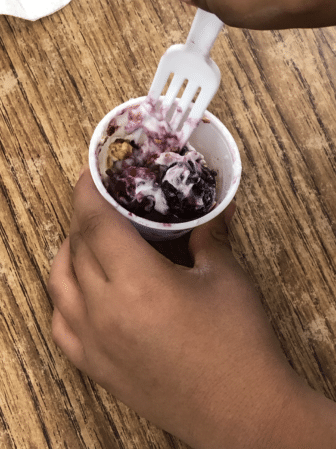
Another FoodCorps lesson I enjoy teaching is “Go, Grow, Glow.” In this lesson, students play go, grow, and glow charades, learning about the different foods that help their bodies have energy (go), grow strong (grow), and stay healthy (glow). They then draw themselves in action and at their best, connecting these feelings to the foods that enable them to enjoy those activities.
In conjunction with this lesson, I have taught students how to make a few “Go, Grow, Glow” snacks, or what I like to call — in a jazzy voice — Triple-G snacks. A whole wheat cracker topped with low-fat cheese and a grape. A bit of vanilla Greek yogurt with fruit sprinkled with granola. Banana and sunflower seed butter wrapped in a whole wheat tortilla. Building relatively low-cost, three-part, delicious snacks exposes them to positive food possibilities easily within their reach. “Go, Grow, Glow” shows up in the cafeteria as a Triple-G lunch packed from home or a Triple-G tray of school-provided options chosen with care.
FoodCorps’ presence at the two elementary schools I serve is slowly but surely creating the organization’s sought-after schoolwide culture of health — one student at a time, one lesson at a time. To counter the weight of food insecurity, we are equipping students with the tools they can pack to make positive food choices at home and at school. These choices will positively impact their health in their lives and the health of future generations of their families.
 FoodCorps AmeriCorps Service Member Shannon Newerth was selected as a runner-up for the 2019 FoodCorps Victory Growers Award “for a compelling account of hunger and food insecurity,” winning a $1,000 prize for her service site, Van Buren Public Schools in Van Buren, AR. The award, sponsored by C&S Wholesale Grocers, highlights that many children struggle with hunger and food insecurity, and that the food they receive at school is the most important meal they will get all day.
FoodCorps AmeriCorps Service Member Shannon Newerth was selected as a runner-up for the 2019 FoodCorps Victory Growers Award “for a compelling account of hunger and food insecurity,” winning a $1,000 prize for her service site, Van Buren Public Schools in Van Buren, AR. The award, sponsored by C&S Wholesale Grocers, highlights that many children struggle with hunger and food insecurity, and that the food they receive at school is the most important meal they will get all day.
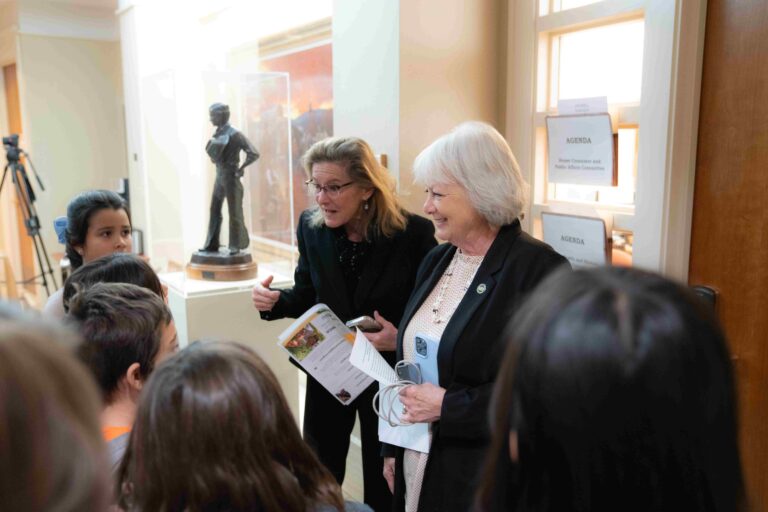
Our 2025 Child Nutrition Policy Year in Review
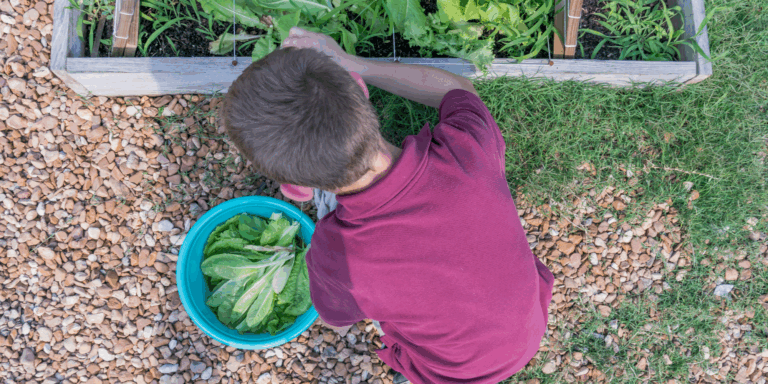
Winterizing Your School Garden
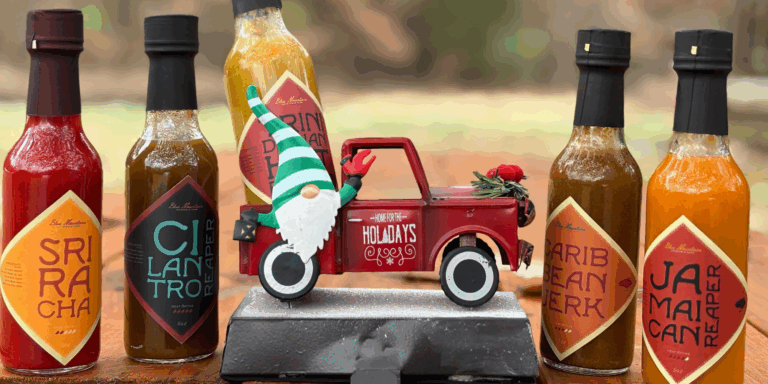
5 Awesome Small Businesses by FoodCorps Alums